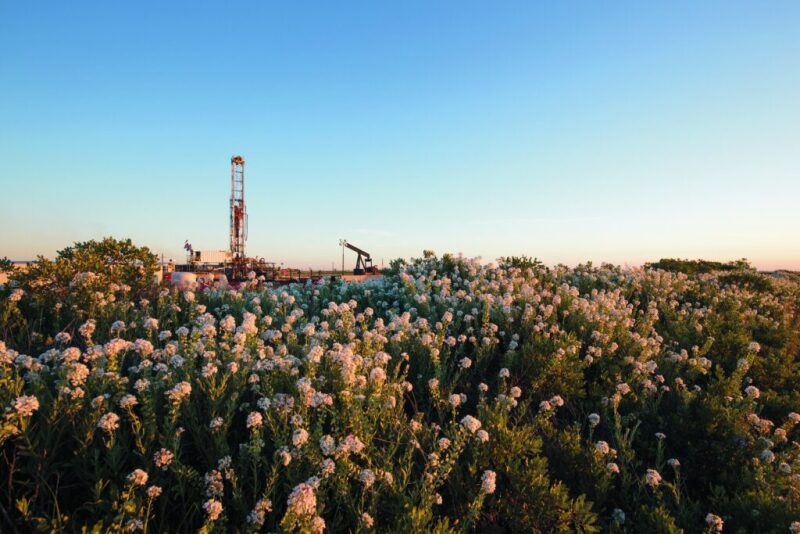Occidental Petroleum has signed an agreement with an affiliate of SK Trading International for the first net-zero oil created by combining crude oil with environmental attributes generated from the sequestration of atmospheric CO2 captured with its planned direct-air-capture (DAC-1) plant and sequestered in the operator’s enhanced-oil-recovery reservoirs in the Permian Basin. SK Trading International expects to convert the net-zero oil into net-zero products.
Under the agreement, Oxy's marketing affiliate may provide SK Trading International’s affiliate with an opportunity to purchase up to 200,000 bbl of net-zero oil per year for 5 years. To produce the environmental attributes to be used for the net-zero oil, Oxy plans to inject approximately 100,000 tonnes of captured atmospheric CO2 per year, which is equal to the expected CO2 emissions from the entire crude oil life cycle, including extraction, transportation, storage, shipping, refining, subsequent use, and combustion.
The deal comes just days after Oxy announced that 1PointFive, a subsidiary of its Oxy Low Carbon Ventures business, agreed to the sale of 400,000 tonnes of carbon offset credits from the DAC-1 plant to aerospace multinational Airbus. Under this agreement, Airbus has prepurchased the capture and permanent sequestration of 100,000 tonnes of CO2 from the atmosphere each year for 4 years—with an option to secure more volume in the future.
Oxy updated investors on 23 March on its plans to invest up to $1 billion in the DAC-1 facility. This initial facility, the world’s largest DAC project, is expected to remove up to 1 mtpa of CO2 annually from its location in the Permian Basin of West Texas. Oxy said it expected construction on the facility to begin during the second half of this year. The Permian DAC plant is slated to come on line in 2024.
The front-end engineering design study, being conducted by Worley, is for a DAC plant initially sized at 500,000 tpa of atmospheric capture from a single train with an option to add a second train, which would enlarge the plant to its full capacity of 1 mtpa.
“Our ultimate goal goes beyond our own emissions inventory to give organizations everywhere the tools they need to achieve net zero, or net negative emissions,” said Oxy boss Vicki Hollub.
The plant project is being led by 1PointFive, which the producer formed to deliver carbon capture use and storage solutions including DAC technology, point-source capture, and geological sequestration hubs. Oxy expects to have three sequestration hubs on line by 2025 and dozens of 1-mtpa DAC facilities a decade later.
“From these initial steps, we continue to build and refine our future worldwide direct capture development scenarios,” said Richard Jackson, president, US onshore resources and carbon management, operations for Occidental. “In a current support scenario, we see market and policy conditions are supportive of 1PointFive building 70 direct air capture facilities by 2035. This is dynamic and only represents the business environment as we see it today.”
For the growth to take place, Oxy said it would need supportive public policy and incentives, growing demand from customers in the products being offered, a mature supply chain, and an environment that supports high-integrity and transparent operations.
“With this additional support the projected development plan could deliver 135 direct air capture facilities coming on line by 2035,” added Jackson.
On the sequestration front, Oxy is planning a series of underground hub developments to be located at the intersection of suitable geology and concentrated industrial emitters. Oxy anticipates each will have at least 6 mtpa of capacity and will be designed with more than three CO2 injection wells and more than five monitoring wells to allow the company to track the CO2 in the formation.
“With individual capture and sequestration projects, participants can simply plug into a hub, making everything easier to develop and finance,” said Jackson. “For this part of the business, our development plan or the current support scenario is focused on low-cost capture projects that have shown economic feasibility. To that end, we’re planning to develop multiple hubs in the US and expect to have three on line by 2025. In the near term, we expect to secure more than 100,000 net acres for these sites by the end of 2022 and have to file multiple permit applications for dedicated injection wells. Today we have approximately half the acreage secured, and we are on track.”
Oxy claims its current commercial discussions with point source emitters represents more than 40 mtpa of emissions to support the hubs. Bringing three hubs on line would mean 18 mtpa of dedicated sequestration capacity, according to the company.
“We're adapting existing resources and advantages to fit a changing world using new thinking approaches and technologies,” added Hollub. “Sometimes history puts you in the right place at the right time with the tools you need to do something extraordinary. Today, as climate targets demand action to keep the world on track, Oxy’s 100-plus-year legacy has brought together just the kind of global assets, diversity, existing infrastructure, operational discipline, and problem-solving mindset needed to tackle the challenge like achieving net zero.”
Occidental also confirmed its plans to deploy between $100 million and $300 million in capital to its Low Carbon Ventures unit this year.


